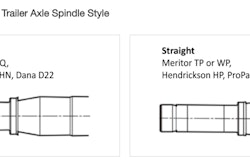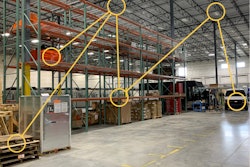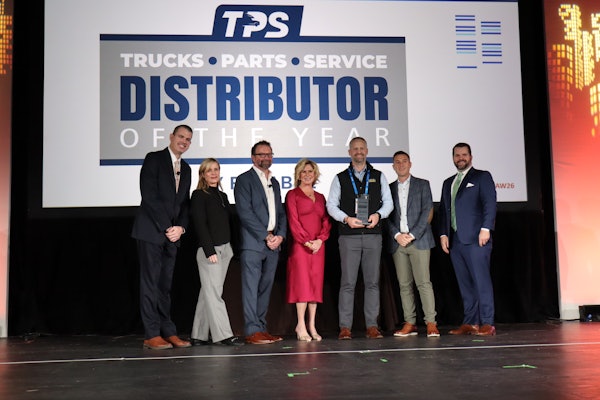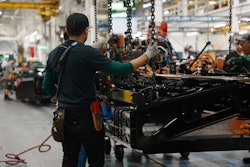
In heavy-duty distribution, there are few financial challenges business owners won’t attempt to solve through increasing sales.
Strategic Solutions’ Doug Austin says that’s natural. Many dealer principals and independent distributor executives are salespeople first and foremost. Many started their careers in sales roles or gravitated to those positions due to their intense desire to interact with and help customers.
But Austin also notes, in some cases, covering up a problem through increasing revenue isn’t the same as solving it. Some financial burdens don’t go away with a higher top line — even if they no longer cause alarm.
Take inefficient purchasing as an example. A six-location distributor lacking a corporate purchasing structure may order a product category from six different vendors at six different prices. If each location turns the product line well, Austin says the company might not view its decentralized strategy as problematic. But it also means the company might not realize how much money it could be saving if it centralized its purchasing to one vendor at a negotiated price.
“These big dealer groups always think as they grow, they’ll be able to capture economies of scale, but that doesn’t just happen,” says Austin. “You have to streamline costs to make that a reality.”
As founder and president of Strategic Source, Austin has been specializing in the latter for decades. His company consults in many verticals, including automotive and heavy truck, and over the last three decades has helped many dealers and distributors increase their bottom line not by selling more, but by cutting duplicate and extraneous procurement expenses. Yet despite his firm’s work, Austin says he still estimates only “about 5 percent” of vehicle dealers and distributors have truly optimized their purchasing procedures.
In a market like this one, where customer demand far outpaces supply, Austin says dealers and distributors can get away with these buying inefficiencies. Nobody cuts costs when business is good, he says.
Yet it is precisely because sales are so strong now that Austin says dealers and distributors should be looking inward to become leaner. He says all too often companies don’t attempt to cut costs until a recession appears and “smacks them in the face.” By taking time now to analyze and optimize purchasing tactics, dealers and distributors can increase their bottom line and add valuable capital to grow while the market is good or save as reserves for when it eventually changes course.
“Now is the perfect time to dig into your bottom line,” Austin says.
Why are companies inefficient in purchasing?
Decentralized purchasing occurs in many industries but is particularly commonplace in the automotive and truck markets, Austin says. He attributes the antiquated tactic to two factors — top line prioritization and commitment to status quo — with the latter impacting the former.
He says business leaders who prefer to sell their way out of problems also can have trouble slowing down and implementing structural change in their businesses, even when necessary.
He uses trucking’s surge of consolidations as an example. Some dealer and distributor groups over the last decade have grown from stable smallish businesses to massive conglomerates. But rather than carefully analyzing and integrating purchasing teams into their larger corporate framework after every transaction, many growing businesses instead choose to keep business as usual to avoid offending new employees or risk losing customer sales during onboarding of a new location. This results in large companies with dozens of stores and independently operating purchasing people all buying the same products from similar and different vendors at multiple price points.
“If you have a purchasing team and everyone isn’t on the same page, you’re just giving money away,” Austin says.
[RELATED: MacKay & Company: Keys to help prevent inventory disorganization]
Though integrating a new location into a centralized purchasing strategy doesn’t have to happen immediately. Austin understands why executives are hesitant to make changes in a new store immediately after a transaction but says postponing the merger of a purchasing department indefinitely just means redundant expenses will pile up over time. He adds it’s actually a nagging awareness that their business could run leaner that motivates many executives to finally go back and centralize their purchasing.
“For a lot of ownership in this industry, they view their management teams as partners. They don’t want to step on anyone’s toes,” Austin says. “But oftentimes those owners also have a sneaking suspicion their companies aren’t as efficient as they could be.”
Why companies should be open to change?
Centralized purchasing means fewer vendors, which enables distributors to increase order volumes and negotiate lower prices. Austin says any business that optimizes its procurement process will see financial savings immediately.
It’s not a challenging concept to get behind, says Chris Starkenburg, president, CLF Warehouse.
“For any business with multiple locations, if you can put everything from a corporate perspective under one roof the efficiencies are so much greater,” says Starkenburg. CLF has centralized its purchasing since opening its first warehouse in 1978 (it now has seven) and relies on a team of purchasing professionals working in conjunction with its warehouse managers to evaluate and purchase all product sold across the company.
“As you grow it’s much easier to incrementally add staff, opposed to hiring new people every time,” Starkenburg says. “Having a centralized purchasing team has also allowed us to share responsibilities … our [purchasing] team doesn’t just buy products, they’re also responsible for core tracking and returns, pricing discrepancies, rebate management.”
[RELATED: Overcoming leadership vertigo]
CBS Parts has a similar structure, with a four-person purchasing team at its Vancouver, B.C., headquarters in charge with purchasing stock orders for its five retail locations, says President Kevin Hopton.
“[Centralized purchasing] is an easy way to efficiently control the inventory that goes into additional branches rather than having to hire the same qualified person multiple times,” he says.
Austin says that’s an advantage that shouldn’t be overlooked. He says most of Strategic Source’s clients come to the company because they want to reduce inventory bloat and purchasing redundancies. Austin says that’s logical as those are areas where potential savings are greatest. But streamlining and standardizing employee responsibilities and cooperation also nets savings if a distributor can get buy-in from its team.
“Parts guys, sometimes they can get a little offended when we come in,” Austin says. “They’re shopping all the time. They’re always looking for parts and they think they know where to get everything.”
The key to getting parts people to commit to centralized purchasing is to play up that product experience. Let them know their relationships and contacts will be used to evaluate supplier lists and pick partners. That way, as vendors are selected, employees feel included and once an optimized vendor base is finalized, they can be confident knowing their best suppliers will still be fulfilling their needs.
And centralized purchasing doesn’t have to strip store managers and salespeople of all purchasing decisions. Both Hopton and Starkenburg say their store managers retain the autonomy to make emergency purchases to fulfill immediate customer needs. Strategic Solutions supports a similar strategy, in which store managers make requests for rush orders to a centralized purchaser, who then places the order with a vetted vendor to ensure the best price.
“Our branch managers also know they can contact our purchasing team at any time if they need a regular order changed,” Hopton says.
[RELATED: Managing obsolescence: Building a useful strategy to track and move unwanted parts]
Centralized purchasing works for other departments too. Dealers and distributors don’t only buy parts. Austin mentions office supplies, marketing materials and shop tools and equipment as among the more than 100 expense categories Strategic Source has identified in heavy truck facilities. He says when his team comes onboard, it optimizes each category, lending its comprehensive product expertise to areas where dealers and distributors might not be as knowledgeable.
“We know a uniform shirt should cost 12 cents,” he says. “We’ll talk to dealers who are paying 15 cents and think they’re getting a great deal because they’re not experts on those costs.”
How long does it take to centralize purchasing?
This is the good news, Austin says. Centralizing purchasing isn’t an exhaustive process. He says his team takes about two months to evaluate a client’s supplier base and another month to develop a centralization strategy. By the fourth month working together the distributor already begins to see savings.
“We try to put together a system to simplify the complex. It takes a minute to get going but once it’s in place, pretty soon you’re biting off big chunks. Such as, ‘Make this change for this line and you’ll save $32,000 a year,’” Austin says. “Within three to four months a dealer can be cash flow positive.”
Additionally, Austin says his company often puts a money savings guarantee of 3- or 4-to-1 against the price of the engagement to a client, ensuring the investment cost to centralize purchasing should never be a barrier toward action.
At CLF, Starkenburg says he can’t speak to the time required to alter one’s purchasing strategy, but he will vouch for the financial savings centralization offers.
“If you let your salespeople control your purchasing dollars your inventory is going to bloat because they’re going to buy everything a customer requests,” he says. “That’s not all bad. You want to have what your customers need. But you don’t want too many heads making too many decisions without communicating. If you’re at high volumes, you want make sure you’re buying the best products through the best channels at the best prices.”
“When you’re talking about Tier 1 suppliers and high-volume product lines, you want to be able to centralize your purchasing so you can negotiate the best prices,” adds Hopton.










